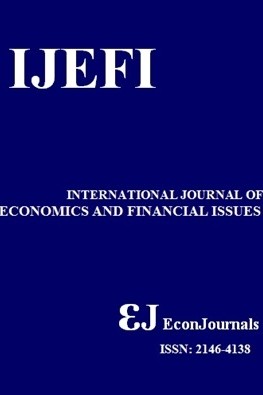Resource Saving Innovative Forms of the Industrial Enterprises
Resource Saving Innovative Forms of the Industrial Enterprises
Resource Saving, Innovation, Competitiveness, Equity Sharing of Profits.,
- Başlangıç: 2011
- Yayıncı: İlhan ÖZTÜRK
Foreign Investment Promotion Analysis in Sultanate of Oman: The Case of Dhofar Governorate
Does Foreign Capital Increase Tax Revenue: The Turkish Case
Eda Balıkçıoğlu, Başak Dalgıç, Burcu Fazlıoğlu
An Empirical Analysis of the ASEAN-4’s Causality between Exports and Output Growth
Muhammad İmran NAZİR, Muhammad ZULFİQAR, Muhammad Bilal SAEED, Yasir HABİB
Alexey İ. SHİNKEVİCH, Angelika A. FARRAKHOVA, Marina V. SHİNKEVİCH, Adeliya V. PAVLOVA, Mikhail G. VYUKOV
The Effect of Credit and Market Risk on Bank Performance: Evidence from Turkey
Sustainability of Current Account Deficit in Turkey (1989–2014)
Zubeyir Turan, Doğan Barak, Ayberk Nuri Berkman, Aslıhan Nakiboglu
Ismail Tijjani Idris, Sabri Nayan
Vladislav Spitsin, Aleksandr Mikhalchuk, Vladimir Zalmezh, Irina Antonova, Igor Tsekhanovsky, Valeriy Zadorozhnyi, Nataliya Shabaldina, Larisa Dorzheeva
The Political Economy of Financial Regulation Policies Following the Global Crisis
